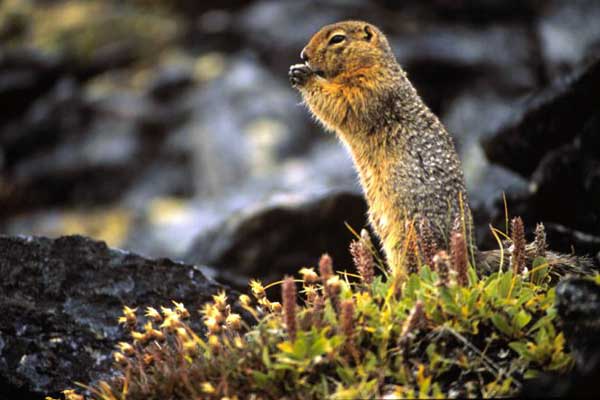
'Roid rage and Arctic ground squirrels
Published: November 6, 2014
When Arctic ground squirrels need to bulk up for winter, they get a boost from an enormous spike in the levels of steroids in their blood.
So why doesn't it lead to 'roid rage?
In humans, anabolic steroids are known to build muscle but also produce negative side effects such as aggressive behaviour and compromised immune systems. Yet Arctic ground squirrels have found a way to pump up with steroids without the risks, University of Toronto researchers say.
A new study, published this week in Biology Letters, by Professor Rudy Boonstra of the University of Toronto Scarborough with University of Toronto Mississauga Professor Douglas Ashley Monks and Research Technician Kaiguo Mo, shows the answer lies in the squirrels' androgen receptors.
Most hibernators only add layers of fat in preparation for winter but Arctic ground squirrels hibernate in frozen ground at subzero temperatures, so they need to burn muscle mass as well as fat to get through the harsh winter and supply key tissues in the brain and heart with the glucose they need.
A previous study had shown that, in the weeks before hibernation, Arctic squirrels were able to increase their muscle mass by 30 per cent thanks to a massive spike in their anabolic steroid levels. In this new study, researchers compared Arctic squirrels to Columbian ground squirrels found in Alberta and discovered the Arctic squirrels were able to bulk up safely because they had four times as many androgen receptors in their muscles than the Columbian ground squirrels.
“They have more steroid receptors within their muscle cells, and fewer in other types of cells, like immune cells, that could be negatively affected by the steroids,” said Boonstra. “The Arctic ground squirrel has evolved this trait to make muscle to cope with hibernating in a deep freeze.”
This ensures that, unlike humans, Arctic squirrels can receive the benefits of high anabolic steroid levels without the costs.
This research was supported by grants from the Natural Sciences and Engineering Research Council of Canada. The research is available online and will be published in the upcoming edition of Biology Letters.


